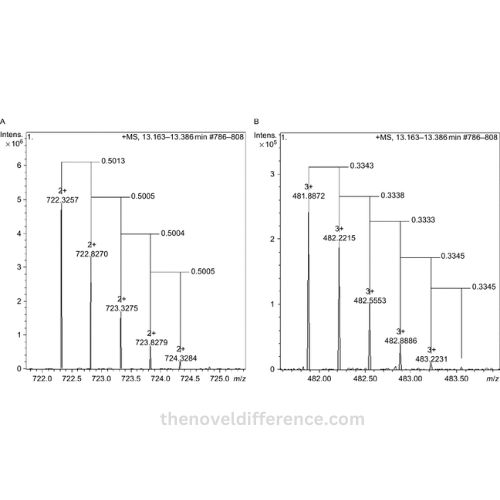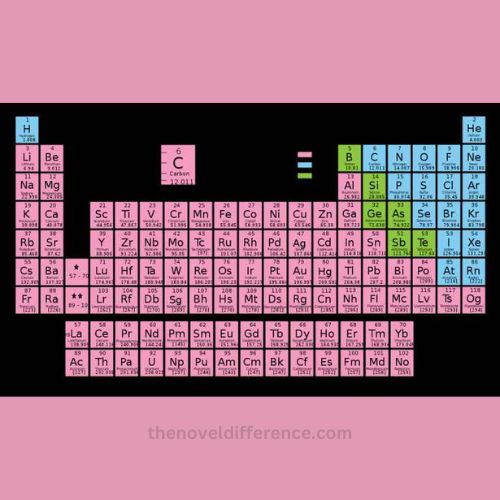Introduction of monoisotopic mass and average mass
Have you ever wondered about the intricacies of molecular composition and how scientists determine the mass of atoms and molecules? In the world of chemistry, the concepts of monoisotopic mass and average mass play a crucial role in understanding the fundamental properties of substances.
While both terms may seem similar, they have distinct differences that can significantly impact scientific calculations and analyses. In this article, we will delve into the realm of atomic and molecular masses, exploring the precise disparities between monoisotopic mass and average mass.
Importance of mass in chemical calculations
The importance of mass in chemical calculations is paramount as it serves as a fundamental parameter for various calculations and analyses in the field of chemistry.
Here are some key reasons why mass is crucial in chemical calculations:
1. Stoichiometry: mass is essential in stoichiometric calculations, which involve determining the quantities of reactants and products in a chemical reaction. The balanced equation provides the mole ratios between different substances, and these ratios are based on the masses of the substances involved.
2. Reaction yield: mass is used to determine the yield of a chemical reaction, which represents the amount of desired product obtained. Theoretical yield, which is calculated based on stoichiometry, relies on the masses of the reactants. Actual yield is measured experimentally and is compared to the theoretical yield to calculate the percent yield.
3. Concentration: mass plays a crucial role in determining the concentration of a substance in a solution. Concentration is typically expressed as moles of solute per unit volume of the solution. To calculate concentration accurately, the masses of solute and solvent, as well as the volume, are necessary.
4. Empirical and molecular formulas: the determination of empirical and molecular formulas involves mass analysis. By determining the masses or percent composition of elements in a compound, the ratio of atoms and the overall molecular formula can be deduced.
5. Limiting reactant: the reactant that is completely consumed is known as the limiting reactant. To identify the limiting reactant, one must compare the masses of the reactants and their respective stoichiometric ratios.
6. Atomic mass and molar mass: the atomic mass of an element provides the basis for calculating the molar mass, which is the mass of one mole of a substance. Molar mass is crucial for converting between mass and moles, allowing for various conversions in chemical calculations.
7. Gas laws: mass is integral to the study of gas laws, such as the ideal gas law. The mass of a gas is necessary for calculating the number of moles, which, along with other variables, helps determine the behavior of gases under different conditions.
8. Solution preparation: mass is used to accurately measure the amounts of solutes needed when preparing solutions. The desired concentration and volume of the solution are determined based on the mass of the solute and the molar mass of the substance.
Mass is a fundamental property in chemistry that underlies numerous calculations, including stoichiometry, yield determination, concentration analysis, formula determination, and gas law applications. It serves as a bridge between the macroscopic and microscopic realms of chemistry, enabling precise quantitative measurements and predictions.
Monoisotopic mass
Monoisotopic mass refers to the mass of a single isotope of an element or a specific form of a molecule that contains only the most abundant naturally occurring isotope of each element. Isotopes are atoms of the same element that have different numbers of neutrons, resulting in different mass numbers.
The monoisotopic mass provides a precise measurement of the mass of a specific isotope or molecule, considering only the most abundant isotope. It is expressed in atomic mass units (amu) or unified atomic mass units (u). The monoisotopic mass is determined by summing the masses of the individual atoms present in the isotope or molecule.
The monoisotopic mass of carbon-12 (the most abundant isotope of carbon) is exactly 12 atomic mass units (12 amu or 12 u). Similarly, the monoisotopic mass of hydrogen-1 is approximately 1 amu, while that of oxygen-16 is approximately 16 amu.
Monoisotopic mass is commonly used in various applications, including mass spectrometry, where it plays a crucial role in identifying and characterizing compounds. In mass spectrometry, the monoisotopic mass of a molecule is used to determine its molecular weight and analyze its fragmentation pattern.
It is important to note that monoisotopic mass provides a precise measurement for a specific isotope or molecule but may not accurately represent the average mass of an element or a molecule considering the natural abundance of different isotopes. To obtain the average mass, isotopic abundances must be taken into account.

Explanation of isotopes and their relevance to monoisotopic mass
Isotopes are variants of an element that have the same number of protons but different numbers of neutrons in their atomic nuclei. As a result, isotopes of an element have different mass numbers. For example, carbon has three isotopes: carbon-12, carbon-13, and carbon-14, which have 6, 7, and 8 neutrons respectively, while all three have 6 protons.
The relevance of isotopes to monoisotopic mass is that different isotopes of an element have different masses. When calculating the monoisotopic mass of an element or a molecule, only the mass of the most abundant isotope is considered. This is because the most abundant isotope usually exists in significantly higher quantities compared to the other isotopes, making their contribution to the overall mass more significant.
For instance, the monoisotopic mass of carbon is based on the most abundant isotope, carbon-12, which has a mass number of 12. Carbon-12 is chosen as the reference isotope because it is the most common and stable isotope of carbon, comprising about 98.9% of naturally occurring carbon. The minor contributions of carbon-13 (approximately 1.1% abundance) and carbon-14 (trace amounts) are typically neglected when calculating the monoisotopic mass.
The monoisotopic mass is based on hydrogen-1, which is the most abundant and stable isotope. The minor contribution of hydrogen-2 (deuterium) is generally not considered for the monoisotopic mass calculation.
By considering only the most abundant isotope in the calculation of monoisotopic mass, it provides a precise and simplified value that represents the characteristic mass of an element or a molecule. This is particularly useful in various applications such as mass spectrometry, where the monoisotopic mass is used as a reference for identification and analysis of compounds.
Example of calculating monoisotopic mass for a specific element or molecule
Sure! Let’s take the example of calculating the monoisotopic mass of water (h2o). To calculate the monoisotopic mass, we need to determine the mass of each individual atom in the molecule and sum them up.
The monoisotopic mass of hydrogen (h) is approximately 1 atomic mass unit (amu), and the monoisotopic mass of oxygen (o) is approximately 16 amu.
Since there are two hydrogen atoms and one oxygen atom in a water molecule, we can calculate the monoisotopic mass as follows:
Monoisotopic mass of h2o = (2 × monoisotopic mass of hydrogen) + monoisotopic mass of oxygen = (2 × 1 amu) + 16 amu = 2 amu + 16 amu = 18 amu
Therefore, the monoisotopic mass of water (h2o) is 18 atomic mass units (amu).
This calculation considers the most abundant isotopes of hydrogen and oxygen, which are hydrogen-1 and oxygen-16, respectively, for determining the monoisotopic mass of water.
Average mass
Average mass, also known as the average atomic mass or atomic weight, is the weighted average of the masses of all naturally occurring isotopes of an element, taking into account their relative abundances. It represents the average mass of all the atoms of that element found in nature.
To calculate the average mass, the masses of each isotope are multiplied by their respective natural abundances (expressed as percentages or fractions), and the products are then summed up.
Let’s take the example of calculating the average mass of carbon (c).
Carbon has three naturally occurring isotopes: carbon-12, carbon-13, and carbon-14. Their respective abundances are approximately 98.9%, 1.1%, and trace amounts.
The atomic masses of these isotopes are as follows:
• carbon-12: 12 atomic mass units (amu)
• carbon-13: 13 amu
• carbon-14: 14 amu
To calculate the average mass of carbon, we can use the following formula:
Average mass of carbon = (abundance of carbon-12 × mass of carbon-12) + (abundance of carbon-13 × mass of carbon-13) + (abundance of carbon-14 × mass of carbon-14)
Using the abundances mentioned above, we can calculate the average mass as follows:
Average mass of carbon = (0.989 × 12 amu) + (0.011 × 13 amu) + (trace amounts × 14 amu)
As trace amounts are negligible in this case, we can ignore the contribution of carbon-14 for simplicity.
Average mass of carbon ≈ (0.989 × 12 amu) + (0.011 × 13 amu) ≈ 11.868 amu + 0.143 amu ≈ 12.011 amu
The average mass of carbon (c) is approximately 12.011 atomic mass units (amu). This calculation considers the relative abundances of different isotopes to determine the average mass, providing a more accurate representation of the average mass of an element compared to the monoisotopic mass, which considers only the most abundant isotope.

Explanation of isotopic abundances and their relevance to average mass
Isotopic abundances refer to the relative proportions or percentages of different isotopes of an element found in nature. It represents the frequency at which each isotope occurs in a naturally occurring sample of an element.
The relevance of isotopic abundances to average mass is that they are used to calculate the weighted average of the masses of all the isotopes of an element, known as the average mass or atomic weight.
Isotopic abundances are essential because different isotopes have different masses, and their abundances determine their contributions to the overall average mass. Isotopes with higher abundances will have a greater impact on the average mass compared to those with lower abundances.
When calculating the average mass, each isotope’s mass is multiplied by its abundance, and the products are summed up. This process takes into account the relative occurrence of each isotope in nature, providing a more accurate representation of the average mass of the element.
Carbon has three isotopes: carbon-12, carbon-13, and carbon-14. The average mass of carbon is calculated by considering the abundances of each isotope. Since carbon-12 is the most abundant isotope of carbon (approximately 98.9% abundance), it will contribute significantly to the average mass. On the other hand, carbon-13, with a lower abundance (approximately 1.1%), will have a lesser impact on the average mass. Carbon-14, with its trace amounts, will have a negligible contribution.
By taking into account the isotopic abundances, the average mass represents a weighted average that considers the variations in mass among different isotopes and reflects the overall distribution of isotopes in a naturally occurring sample of an element.
The knowledge of isotopic abundances and their relevance to average mass is crucial in various fields of chemistry, including isotope analysis, geochemistry, radiometric dating, and the determination of molecular formulas. It provides valuable information about the composition and characteristics of elements and compounds, allowing for accurate calculations and analysis in scientific research and practical applications.
Example of calculating average mass for a specific element or molecule
Certainly! Let’s calculate the average mass of chlorine (cl).
Chlorine has two naturally occurring isotopes: chlorine-35 and chlorine-37. Their respective abundances are approximately 75.77% and 24.23%.
The atomic masses of these isotopes are as follows:
• chlorine-35: 35 atomic mass units (amu)
• chlorine-37: 37 amu
To calculate the average mass of chlorine, we can use the following formula:
Average mass of chlorine = (abundance of chlorine-35 × mass of chlorine-35) + (abundance of chlorine-37 × mass of chlorine-37)
Using the abundances mentioned above, we can calculate the average mass as follows:
Average mass of chlorine = (0.7577 × 35 amu) + (0.2423 × 37 amu) = 26.51695 amu + 8.99951 amu = 35.51646 amu
The average mass of chlorine (cl) is approximately 35.51646 atomic mass units (amu). This calculation takes into account the relative abundances of chlorine-35 and chlorine-37 to determine the average mass, providing a more accurate representation of the average mass of chlorine compared to the monoisotopic mass, which considers only the most abundant isotope.
Monoisotopic mass vs Average mass
The difference between monoisotopic mass and average mass lies in the way they represent the mass of an element or molecule.
Monoisotopic mass:
1. Definition: monoisotopic mass refers to the mass of a single isotope of an element or a specific form of a molecule, considering only the most abundant naturally occurring isotope.
2. Calculation: the monoisotopic mass is calculated by summing the masses of the individual atoms present in the isotope or molecule using the atomic masses of the most abundant isotopes.
3. Application: monoisotopic mass is commonly used in applications such as mass spectrometry, where it is used for identifying and characterizing compounds based on their precise mass values.
Average mass:
1. Definition: average mass, also known as the average atomic mass or atomic weight, represents the weighted average of the masses of all naturally occurring isotopes of an element, taking into account their relative abundances.
2. Calculation: the average mass is calculated by multiplying the mass of each isotope by its abundance, and then summing up these weighted values for all isotopes of the element.
3. Application: average mass is used in various applications such as determining molecular formulas, stoichiometry calculations, and other areas where a representative mass value is required.
Key differences:
1. Considered isotopes: monoisotopic mass considers only the most abundant isotope or a specific form of a molecule, while average mass considers all naturally occurring isotopes and their relative abundances.
2. Calculation method: monoisotopic mass is calculated by summing the masses of individual atoms of the most abundant isotope, while average mass is calculated by taking a weighted average of the masses of all isotopes based on their abundances.
3. Precision vs. Representation: monoisotopic mass provides a precise mass value for a specific isotope or molecule, while average mass represents the overall mass distribution considering all isotopes and their abundances.
4. Applications: monoisotopic mass is particularly useful in mass spectrometry for compound identification, while average mass is utilized in various calculations such as stoichiometry, molecular formula determination, and other quantitative analyses.
Monoisotopic mass represents the mass of a specific isotope or molecule, considering only the most abundant isotope, while average mass represents the weighted average mass of all isotopes, taking into account their relative abundances.
Practical Examples and Applications
Certainly! Here are some practical examples and applications that highlight the differences between monoisotopic mass and average mass:
1. Mass spectrometry: mass spectrometry is a powerful analytical technique used to identify and analyze compounds. In this field, monoisotopic mass plays a crucial role in determining the mass-to-charge ratio of ions and is used to identify unknown compounds by comparing their monoisotopic masses with known mass databases. Average mass, on the other hand, is used for accurate mass determination and quantification of compounds in complex mixtures.
2. Isotope ratio mass spectrometry (irms): irms is used to measure the ratios of stable isotopes in a sample. It relies on the precise determination of isotopic masses. The monoisotopic mass is used to calculate the isotopic ratios accurately, whereas average mass is used to determine the overall average isotopic composition of a sample.
3. Elemental analysis: the monoisotopic mass is used to determine the elemental composition of a compound accurately. By comparing the monoisotopic mass of a compound with the known monoisotopic masses of elements, the presence and number of specific elements can be deduced. Average mass is employed in quantitative elemental analysis to determine the percentage composition of elements in a compound based on their average masses and isotopic abundances.
4. Drug discovery and the pharmaceutical industry: monoisotopic mass is utilized to identify and characterize drug candidates, metabolites, and impurities. The precise mass determination of compounds is essential for accurate structural elucidation. Average mass is employed in pharmacokinetics studies and drug formulation, where it is crucial to determine the average molecular weight and dosage calculations.
5. Environmental science: both monoisotopic mass and average mass are used. For example, the monoisotopic mass is employed in the analysis of pollutants, such as heavy metals, to determine their precise masses and identify their sources. Average mass is utilized in the analysis of isotopic compositions in environmental samples, such as water or soil, to trace the origin and movement of elements and compounds.
These examples demonstrate how both monoisotopic mass and average mass have distinct applications in various fields, depending on the level of precision required and the nature of the analysis being conducted.
Conclusion
The difference between monoisotopic mass and average mass lies in their definitions, considerations, precision, and applications. The monoisotopic mass represents the mass of a specific isotope or individual molecule, providing a precise measurement.
On the other hand, the average mass takes into account the abundances of all isotopes, offering a representative value. The choice between using monoisotopic mass or average mass depends on the level of precision required for scientific calculations.



